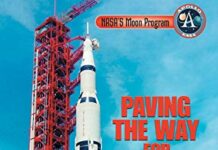
Ebook Info
- Published: 2007
- Number of pages: 400 pages
- Format: PDF
- File Size: 12.32 MB
- Authors: David M. Harland
Description
*Brings the story of the Cassini-Huygens mission and their joint exploration of the Saturnian system right up to date. *Combines a review of previous knowledge of Saturn, its rings and moons, including Titan, with new spacecraft results in one handy volume. *Provides the latest and most spectacular images, which will never have appeared before in book form. *Gives a context to enable the reader to more easily appreciate the stream of discoveries that will be made by the Cassini-Huygens mission. *Tells the exciting story of the Huygens spacecraft’s journey to the surface of Titan.
User’s Reviews
Reviews from Amazon users which were colected at the time this book was published on the website:
⭐It may be true that this book contains a lot of information about Saturn and its moons and all the other findings in the outer solar system, however, the writing style is quite complicated for someone that isn’t thoroughly experienced in the field of astronomy.The writing style is extremely technical and overly detailed. For example, there are several sections in the book where the author describes each specific part on the space probe that NASA has built using highly technical terms that only a veteran astronomer or NASA scientist would be familiar with. The average reader will get lost quite fast in all the technical explanations and get quite frustrated. Here is a typical example of the style of writing that the author uses: “The Ultraviolet Spectrometer (UVS) did not have a lens, it had a series of linear apertures set in line which served as a collimator to produce a field of view 2 by 15 milliradians, then a diffraction grating illuminated a linear array of 128 detectors, each of which measured the brightness on a 1024 point scale to measure the range of 50-170 nanometers in a spectral resolution of 1 nanometre. It was to investigate ultraviolet glows in interplanetary space and in ionospheres, and use limb sounding measurements of the extent to which insolation was absorbed during solar occultations to profile the chemical composition of the upper regions of planetary atmospheres….”If you can figure out such details then this book is for you. He uses this kind of writing throughout the majority of the book and it gets quite frustrating to try to decipher all the technical jargon.Furthermore, the author fails to focus on perhaps the most important part of the subject matter, the planets and the moons themselves. He spends so much time going into every little detail of how NASA actually sends its probes to their locations that you get lost trying to figure out what he was trying to explain to begin with. He constantly uses terms only familiar to physics and chemistry majors.If you are looking for a more amateur-friendly book about astronomy then I recommend checking out David Grinspoon. His writing is a lot less technical and he focuses on the important big picture instead of letting his readers get lost in all the insignificant details that are only important to a scientist, not an amateur astronomy enthusiast.
⭐I actually purchased this book for my 10 tear old grand daughter. She is a very intelligent young lady however there is a quite a bit of complexed detail in some of the chapters. In that respect it meet all my expectations. I know she will enjoy it even though there are some difficult areas. I will certainly enjoy learning more about the voyage and Saturn.
⭐This is a reasonably thorough summary of the Cassini/Huygens mission to Saturn and Titan, giving a comprehensive look at the spacecraft components and mission agenda. As noted by at least one other reviewer, the text is not at the level of a PBS Nova program, but rather intended for the interested layperson who has some familiarity and is comfortable with technical details and prose. The focus is on the mission and the spacecraft, and although the findings are certainly there, I might have wished that more emphasis might have been placed on those discoveries and confirmations, particularly in the context of painting a descriptive picture of the Saturn system. But, for what it sets out to do — explain the mission and all the equipment and strategies that made it possible — this book does a fine job of it.
⭐This is a new edition of Harland’s fine ‘Mission to Saturn’, adding100 new pages of Cassini findings through summer 2006, including ofcourse the results of the Huygens encounter at Titan. As usual, ahandy, comprehensive volume, nicely written and illustrated. (There is no point in buying Mission to Saturn now, since its contentsare included in CaS:HR)
⭐It’s probably a very good read for those who want the rich technical detail. However, i was hoping to see far more of the wonderful colour photos as shown on the TV programme about the mission. In fact the colour photos are only in a small section at the end of the book. Why is that? Saturn is just about the most picturesque thing in the entire solar system – and as the colour photos exist in abundance it was a disappointment that more weren’t included.
Keywords
Free Download Cassini at Saturn: Huygens Results (Springer Praxis Books) 2007th Edition in PDF format
Cassini at Saturn: Huygens Results (Springer Praxis Books) 2007th Edition PDF Free Download
Download Cassini at Saturn: Huygens Results (Springer Praxis Books) 2007th Edition 2007 PDF Free
Cassini at Saturn: Huygens Results (Springer Praxis Books) 2007th Edition 2007 PDF Free Download
Download Cassini at Saturn: Huygens Results (Springer Praxis Books) 2007th Edition PDF
Free Download Ebook Cassini at Saturn: Huygens Results (Springer Praxis Books) 2007th Edition





